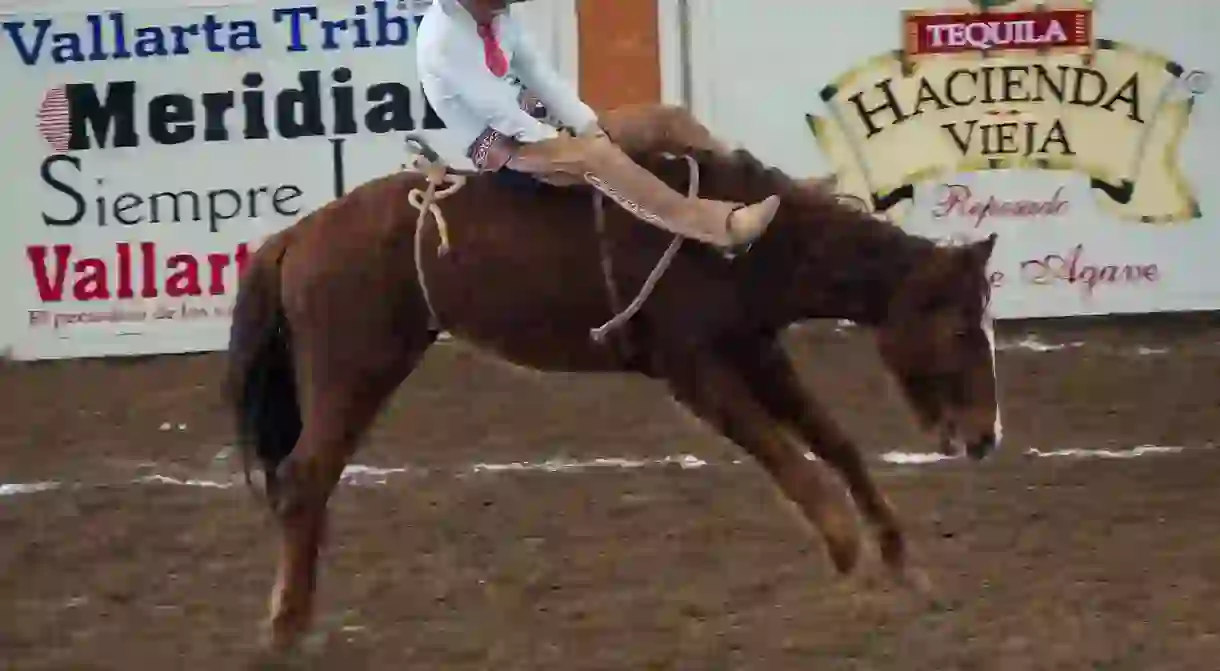Seven Sports That Make Mexico the Country It Is

Everyone knows that Mexicans love to play sports, but do you know the sports that have been most important in the formation of Mexico? Here are seven sports that make Mexico, Mexico. Without them the country wouldn’t be the same!
Mesoamerican ballgame
The distinction for the oldest sport played in Mexico often goes to what is commonly called the mesoamerican ballgame. This game was played throughout Central America, and although there are many archeological depictions of this game, those who study it still are not totally sure what all the rules were. From what we know it is most likely that the game was a little like racquet ball or fronton where the goal is to keep the ball in play. The ball was solid rubber and HEAVY, and archeologists believe that players used their hips to keep it in the air. Other versions seemed to exist where forearms and racquets were used. Evidence has been found suggesting that this game was also used in ritual sacrifice, meaning the losers never got a rematch, just a funeral.

Bull fighting
While most of the world has outlawed bullfighting because it is seen as cruelty towards animals, Mexico is one of the eight remaining countries in the world where it is legal. Brought by the Spanish conquistadores over 500 years ago, bullfighting has become a part of the fiber of the country. Outside of Spain, Mexico has the most important bullfighting events and toreros (bull fighters) in the world. The performance takes place in three rounds, each progressively bloodier as the bull is stabbed and brought to exhaustion by the bull fighter and picador until, in the final act, the torero stabs the bull between the shoulder blades and kills it. A bloody tradition, it is nevertheless full of pomp, circumstance and, some would say, beauty.

Fronton
Also called Basque pelota, the first versions of this game were created in the Basque country of Spain in the 1800s. The sport eventually made its way to Mexico and several important fronton clubs opened in Mexico City from the 1890s to the 1920s, including Fronton Mexico, which just last year re-opened with a new season of a Jai Alai (a type of Basque pelota played with scoop-like baskets on the players’ hands). The idea of the game is similar to handball – on a rectangular court players hit a hard ball (usually with their hands) against a main wall (called a fronton, or front wall) and get points for where it bounces back on the court, while their opponents have to try to return the serve. Where once there were fronton courts all over Mexico, they are slowly becoming extinct and the game is losing popularity to other sports, like soccer.
Soccer
By far Mexico’s most popular sport to watch, to play, and to complain about is soccer. The sport was brought to Mexico by the British who founded the Orizaba Athletic Club in 1898. The club’s main sport was cricket, but they started a soccer team in 1901 the same year that the Cornish workers for the company Real del Monte formally founded the Pachuca Athletic Club. One year later the first national soccer competition was held – a collection of teams from the Orizaba club, Reforma club, and México Cricket and British club. The sport is played across the country but is particularly popular in the central and northern parts of the country with the teams from Mexico City, Guadalajara, Pachuca, and Monterrey some of the most famous.

Baseball
While soccer dominates the airwaves, baseball is quite a popular sport in Mexico, albeit not as much as in other Latin American countries like Cuba and Venezuela. Mexico has two leagues, a northern and southern league, that play a similar seasonal schedule as the United States. Many of the best U.S. player are actually from Mexico and recruitment across the border has a long tradition of uniting the two countries. Mexican baseball is slightly more popular on the border with the United States and in the country’s port cities because it was brought to those areas of the country first by U.S. soldiers stationed in Mexico. Despite its popularity, baseball is not enough of a money-maker in Mexico for lots of cash to flow in to it. Most stadiums are medium-sized and only a portion of games are broadcast on television.

Charrería
Out of the ranch and animal-handling competitions of Colonial Mexico came the grand gala that is today the charrería. Similiar to rodeos in the U.S. but with more formality and grace, the charreado includes events like cattle roping, horse riding and horse preformances, riding bareback and other skill-based contests and competitions. A now-famous visual of the charreando is the Escaramuza, a show of female horse-riders dressed in traditional rodeo dresses and cowboy hats. With the break up of the hacienda system at the turn of the century, charros would have traditionally preformed from hacienda to hacienda from a charro association that has kept the tradition alive to this day.

Boxing
Mexico is one of the most important boxing countries in the world. Mexico boxers have won 13 Olympic medals as well. Big names in boxing have graced the stages of Mexico’s incredible boxing rings, including: Julio César Chávez, Ricardo “El Finito” López, Carlos Zárate, Rubén “El Púas” Olivares, Raúl “El Ratón” Macías, Salvador Sánchez, Marco Antonio Barrera, Érik “El Terrible” Morales, Lupe Pintor, and Juan Manuel Márquez. Boxing matches are country-wide events that bring all Mexicans together, regardless of who they are rooting for.














